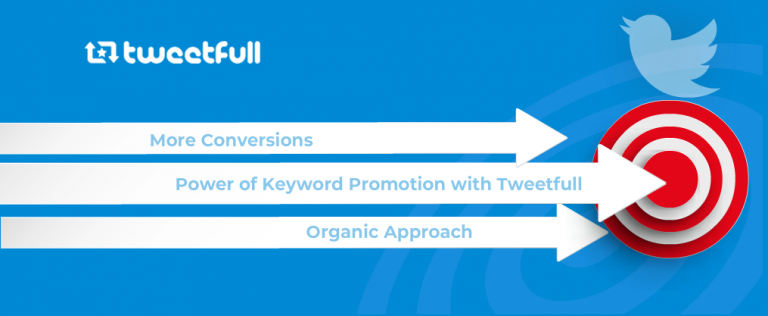A Guide to Twitter’s Shop Module And Super Follow
Twitter is rapidly emerging as a significant player in the e-commerce landscape with its innovative shopping feature known as the shop module. Following the lead of social media giants like Facebook and Instagram, which have successfully integrated shopping functionalities, Twitter aims to simplify the process of selling products directly through its platform. This new module, which serves as a functional building block within the platform, acts as an in-app service that enables businesses to seamlessly showcase and sell their products, enhancing the overall user experience and streamlining the purchase journey.
The shop module integrates a variety of essential elements—including layout elements, product elements, and design elements—that make online shopping both intuitive and efficient for businesses and consumers alike. Businesses can easily add high-quality product images and detailed descriptions, allowing potential customers to browse through different product categories and make well-informed purchasing decisions. Shop modules can be added to pages through the Divi Builder or similar platforms, allowing users to integrate WooCommerce features and customize the shop display by simply dragging and dropping modules onto their desired pages. Additionally, you can customize the appearance of product price, such as adjusting the font, size, and color to match your branding. Images are integrated into the shop module with features like image overlays and image sliders, enhancing the visual presentation and user experience.
Moreover, the module supports a customizable layout, where users can change the number of product columns for different devices—such as desktop, tablet, and mobile—to enhance the visual presentation and user experience. There are default layout and sorting options available, which can be customized to better fit your storefront’s needs. Various options are provided for configuring the shop module, including color options, product quantity adjustment, and device visibility controls. You can also adjust the size of fonts or images for better design flexibility. Customizing text elements, such as title text, price text, and overlay text, is possible through options for color, font, size, and more, allowing for a tailored and visually appealing product display. This gives companies the flexibility to tailor their storefronts.
One of the standout features of the shop module is its robust inventory management system. This functionality helps businesses keep track of product quantities in real time, ensuring that customers can only purchase items currently in stock. This reduces the risk of overselling and enhances overall customer satisfaction. Additionally, the module provides options to showcase product ratings and reviews, which play a crucial role in building trust and credibility among shoppers.
From a technical perspective, the shop module is designed to work smoothly with Twitter’s existing infrastructure and is compatible across various devices, including iOS and Android smartphones, tablets, and desktop browsers. This cross-platform compatibility guarantees a consistent shopping experience regardless of how users access the platform.
For businesses new to this feature, Twitter offers comprehensive documentation and customer support to facilitate the installation and configuration of the shop module. This includes step-by-step guides, video tutorials, and direct access to support channels. Thanks to the ease of installation and customization, even small businesses with limited technical knowledge can leverage this powerful tool to expand their online presence.
In summary, Twitter’s shop module is much more than a simple product listing feature; it is a comprehensive e-commerce solution designed to empower businesses to sell directly on social media with ease and efficiency. By combining essential functionalities like inventory management, customizable product displays, and seamless payment integration, Twitter is paving the way for a new era of social commerce that benefits both sellers and buyers. The shop module also helps create a fine, elegant, and sophisticated look for your storefront, contributing to a polished and professional brand image.
Twitter’s Journey to the Shop Module
Twitter’s path toward integrating shopping capabilities within its platform has been a gradual evolution. Back in 2015, Twitter experimented with a “Buy now” button that allowed users to purchase products directly through tweets. However, this feature did not meet expectations and was discontinued in 2017. Experts suggest that the “Buy now” button failed mainly because it prioritized convenience over relevance, which did not resonate well with users.
Since then, Twitter has been steadily enhancing its commerce capabilities. The launch of the shop module marks a significant improvement over previous attempts. The latest version of this feature is currently available in a pilot phase for users in the United States who access Twitter in English on iOS devices. This version reflects Twitter’s dedication to offering a more engaging and effective shopping experience within the app.
The progression from the original “Buy now” button to the current shop module highlights Twitter’s learning curve and adaptation to user preferences and market demands. For example, a business can use the shop module to display a curated selection of products directly on their Twitter profile, allowing users to browse and purchase items without leaving the app. Unlike the earlier feature, the shop module integrates shopping options directly within business profiles, creating a more natural and immersive shopping environment. This integration not only boosts product visibility but also encourages browsing through different product categories, enhancing user engagement.
Beyond technical upgrades, Twitter actively promotes the shop module among businesses by providing detailed documentation, tutorials, and customer support. This ecosystem empowers businesses of all sizes to install, customize, and optimize their online stores within Twitter, regardless of their technical expertise.
Overall, Twitter’s journey to the shop module represents a strategic shift toward creating a more relevant, customizable, and user-friendly shopping experience. By learning from past challenges and leveraging modern technology, Twitter is poised to offer a compelling alternative to existing social commerce platforms, helping businesses connect with their customers in new and meaningful ways.
How the Shop Module Works for Selling Products
Our firsthand experience with the shop module has been overwhelmingly positive. Here’s an in-depth look at how this module functions:
Business accounts enabled with the shop module can list their products for sale directly on their Twitter profiles. When a user visits such a business profile, the products available for sale are prominently displayed at the top of the profile page. Shoppers can swipe right to browse through all the products listed by the business, making it effortless to explore different product categories and options. Multiple product images are shown to users through sliders or galleries, allowing for a better visual presentation of each item.
Upon selecting a product, the user can complete the purchase and payment entirely within the Twitter app, without being redirected to external websites or third-party sellers. Customers can place orders directly within the Twitter app, streamlining the transaction process. This seamless integration simplifies the checkout process and enhances the overall shopping experience.
Unlike Facebook’s “Marketplace,” the shop module does not have a dedicated tab on Twitter. Instead, shopping options are embedded directly into business profiles, creating a personalized and context-specific shopping environment.
The shop module allows businesses to customize the number of products displayed and adjust the layout of the product showcase, including the columns number and product count. This flexibility helps create visually appealing and user-friendly storefronts. The module supports different types of product listings, such as featured items, new arrivals, or sale products, enabling businesses to highlight specific offerings effectively. Product listings can be sorted by various options, including popularity, price, and newness, giving customers more control over how they browse.
From a design standpoint, businesses can also customize colors, fonts, and icons within the shop module to align with their brand identity. This level of customization ensures that the shopping experience feels cohesive and professional, encouraging users to engage more deeply with the products.
The shop module also includes options to display product ratings and reviews, which significantly influence purchasing decisions by building trust among potential buyers. Users can sort or filter products by customer rating, making it easier to find highly rated items. These social proof elements are essential in creating a credible and reliable shopping environment.
Moreover, the checkout process within the shop module is designed to be smooth and secure. Users can enter payment details, shipping information, and complete orders without leaving the Twitter app. This frictionless process increases the likelihood of completed sales.
For businesses, the shop module offers analytics and reporting tools that provide insights into product performance, sales trends, and customer behavior. Businesses can track low inventory levels and receive alerts when stock is low, as well as sort products by price from low to high for better inventory and sales management. This valuable data can be used to optimize product listings, marketing strategies, and inventory management.
In essence, the shop module combines ease of use, customization options, and robust e-commerce features to create a comprehensive solution for businesses looking to sell directly on Twitter. Its integration within business profiles ensures that shopping is a natural part of the social media experience, benefiting both sellers and buyers alike.
Configuring the Shop Module
Setting up your shop module correctly is essential for a smooth and successful e-commerce experience on your website. To get started, make sure you have the latest version of the Divi Builder installed. The Divi Builder is a versatile module that empowers you to create, customize, and manage your online shop with ease, whether you’re selling products or offering services.
Once the builder is installed, navigate to your website’s dashboard and select the shop module from the available options. This module allows you to set up your storefront by adding products, defining categories, and organizing your inventory. You can easily upload product images, set prices, and provide detailed descriptions to ensure your offerings are displayed attractively and informatively.
The Divi Builder’s intuitive interface lets you customize the layout and design of your shop, so you can align it with your brand’s style. Adjust the number of columns, change color schemes, and modify fonts to create a unique shopping experience for your customers. With the latest version, you’ll also benefit from enhanced functionality and improved performance, making it easier to manage your products and services.
By following these steps and utilizing the powerful features of the Divi Builder, you can ensure your shop module is set up for success, ready to help you sell products and services directly from your website.
Understanding Twitter Business Accounts
To fully leverage the shop module, having a dedicated Twitter business account is essential. While these accounts are technically similar to regular Twitter accounts, they are specifically set up to represent a company or brand and include detailed business information. Twitter encourages businesses to create and maintain these accounts to better connect with their customers and showcase their products effectively.
If you have not yet set up a Twitter business account, it is advisable to consult Twitter’s official business profile guide to ensure your account is optimized for commerce and promotional activities.
Introducing Super Follow: Complementing the Shop Module
Before launching the shop module, Twitter introduced another feature called Super Follow, which focuses on boosting e-commerce and content monetization. The Super Follow feature allows eligible Twitter accounts to offer exclusive content to subscribers who pay a monthly fee.
Here’s how Super Follow works:
Twitter account holders who meet the eligibility criteria can apply to enable Super Follow. Once approved, account owners can access the Super Follow settings through the Monetization -> Super Follows section in their account dashboard. They can then select from three predefined pricing options to charge their followers for exclusive access.
Super Followers gain access to special content that regular followers do not see. Account owners can control the visibility of tweets and choose whether content is available to all followers or only to super followers.
This feature has been well received by business accounts, as it offers a new way to engage with customers and provide exclusive deals, early access to new products, or premium offers. Like the shop module, Super Follow is currently available to users in the United States.
The Future of Commerce on Twitter
With the launch of the shop module, the relevance of Super Follow has increased, creating a more comprehensive ecosystem for businesses to connect, engage, and sell on Twitter. The platform is reportedly working on additional innovative features aimed at elevating business opportunities and enhancing the overall shopping experience.
One anticipated development is the integration of advanced analytics within the shop module. These analytics will provide businesses with deeper insights into customer behavior, product performance, and sales trends, enabling more informed decision-making and targeted marketing strategies. Enhanced reporting tools will allow businesses to track metrics such as conversion rates, average order value, and popular product categories over defined date ranges.
Furthermore, Twitter is expected to introduce more customization options for the shop module layout and design. This will allow businesses to better align their online storefronts with their brand identity by adjusting elements like colors, fonts, and icons. The ability to disable or enable specific features, such as customer reviews or product ratings, will give businesses greater control over the shopping experience.
Another promising feature in development is the incorporation of a slider to showcase multiple product images per item, providing customers with a more detailed view of products. This enhancement will improve user engagement and help potential buyers make more informed purchase decisions.
To support a wider range of sellers, Twitter plans to expand the shop module availability beyond the current pilot phase, including support for international markets and multiple currencies. This will make it easier for businesses worldwide to publish their products and reach a broader audience.
Security and payment processing are also areas of focus, with Twitter aiming to implement more robust safeguards and seamless checkout options. Businesses will benefit from simplified payment integrations that support various units of currency and payment methods, ensuring a smooth transaction process for customers.
Overall, the shop module combines the right mix of functionality, ease of use, and seamless integration to support business success on Twitter. It provides businesses with greater control over how their products are displayed and sold, while also simplifying the checkout process for customers.
For those interested in staying updated with the latest Twitter features and tips on maximizing their business presence, keep an eye on our educational blog on Twitter happenings. Additionally, tools like our Twitter follower tool can help businesses grow their audience and increase engagement.
In conclusion, Twitter’s shop module represents a promising step forward in social commerce, offering businesses a powerful new way to create and manage their online store directly within the platform. By combining product display, payment processing, and exclusive content options like Super Follow, Twitter is set to redefine how brands connect with their customers and drive sales on social media.




![How to get more followers on Twitter: 11 Easy Ways [Tried & Tested]](https://tweetfull.com/blog/wp-content/uploads/2020/09/How-to-get-more-followers-on-Twitter-11-Easy-Ways-_Tried-Tested-768x316.png)


